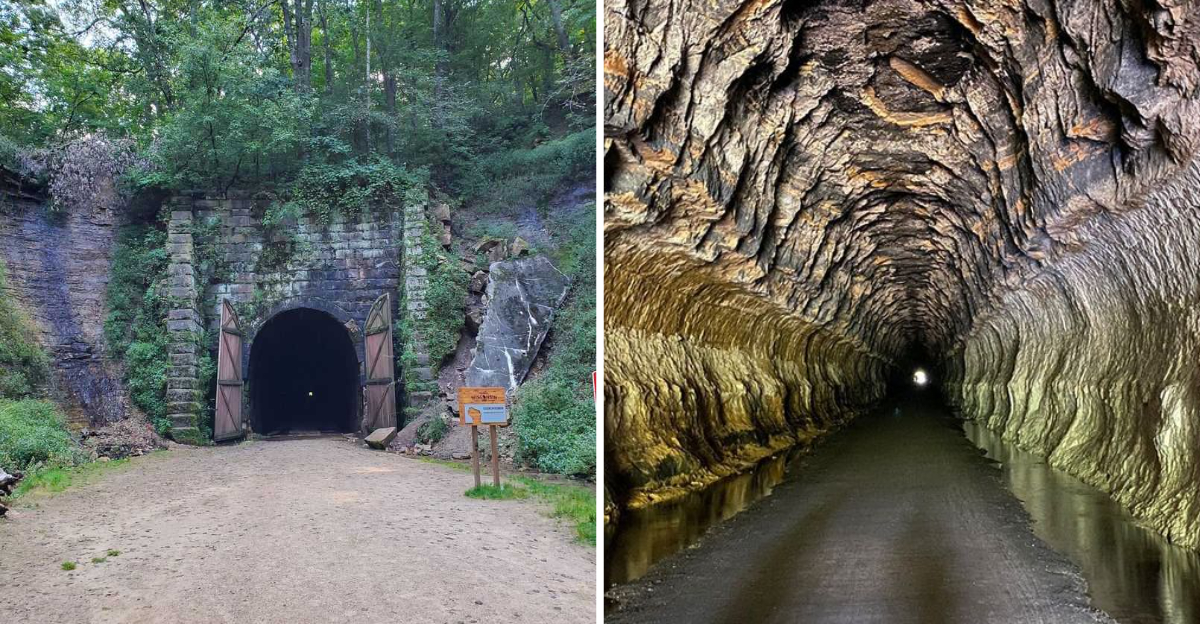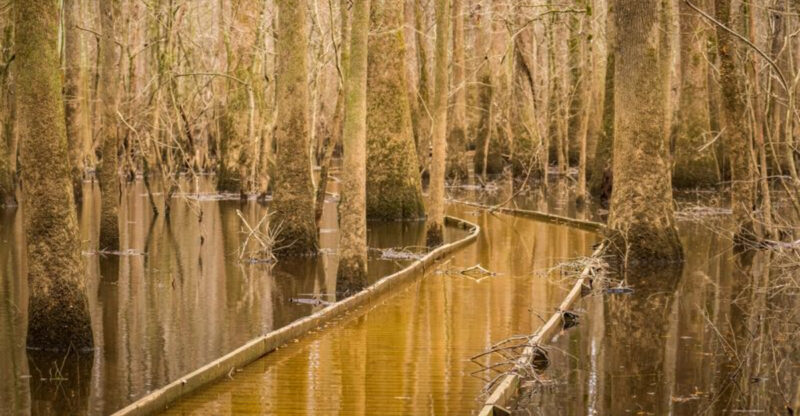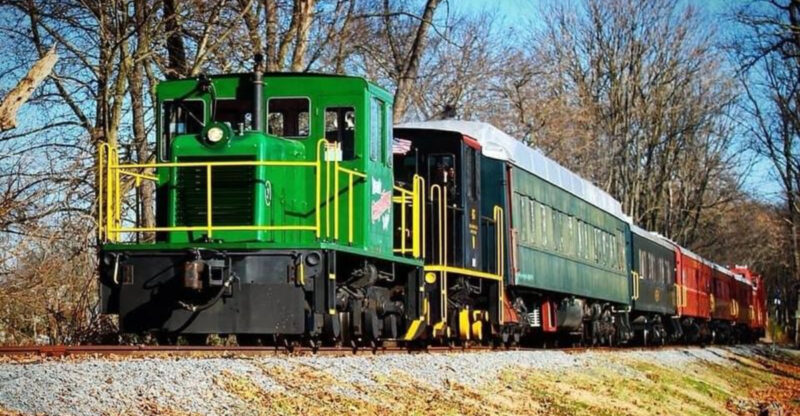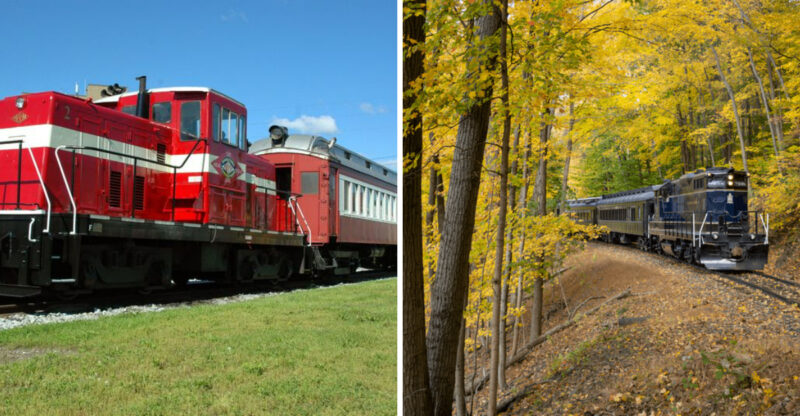12 Things You Didn’t Know About Wisconsin’s Most Unique Tunnel The Stewart Tunnel

Hidden in the heart of Wisconsin lies a passage that’s more than just a hole through rock. The Stewart Tunnel has witnessed over a century of history, transforming from a vital railroad route into a beloved recreational trail.
Most people walk or bike through it without knowing the fascinating stories behind its construction, the people who built it, and the secrets it holds today.
1. Built in 1873 for the Railroad Boom
When you think about the 1870s, railroads were everything to small towns hoping to grow. The Stewart Tunnel was carved through solid rock to connect communities and transport goods across Wisconsin’s challenging terrain. Workers used basic tools like picks, shovels, and dynamite to blast through limestone.
It took nearly two years to complete this ambitious project. Imagine the determination required to dig through 1,200 feet of stubborn rock without modern machinery. The tunnel opened new possibilities for trade and travel throughout the region.
Today, you can still see tool marks on the walls from those hardworking crews. Their legacy remains visible in every stone.
2. Named After a Railroad Superintendent
Did you know the tunnel honors Samuel Stewart, a superintendent who oversaw railroad operations in this region? He wasn’t just a manager sitting behind a desk. Stewart personally visited construction sites and ensured workers had what they needed to succeed.
His leadership style earned respect from laborers and executives alike. When the tunnel was completed, the railroad company decided to name it after him as recognition for his dedication. It’s a testament to how one person’s commitment can leave a lasting mark.
Few tunnels carry individual names like this one does. Stewart’s legacy lives on every time someone mentions this remarkable structure.
3. Stretches 1,200 Feet Through Solid Limestone
If you’ve ever walked through the Stewart Tunnel, you know it feels like an underground adventure. The entire passage extends 1,200 feet, making it one of Wisconsin’s longest railroad tunnels. Limestone walls surround you on all sides, creating a cool environment even on hot summer days.
This rock formation dates back millions of years to when ancient seas covered the region. Carving through it required incredible skill and patience from 19th-century workers. The limestone’s hardness made progress slow but ensured the tunnel’s durability.
Walking through feels like stepping back in time. The stone tells stories of geological history and human perseverance.
4. Part of the Elroy-Sparta State Trail Today
Are you someone who loves biking through scenic trails? The Stewart Tunnel now serves as a highlight along the Elroy-Sparta State Trail, America’s first rails-to-trails conversion. After trains stopped running in the 1960s, local communities saw potential for recreation instead of abandonment.
This 32-mile trail attracts thousands of visitors annually who bike, hike, and explore. The tunnel provides a unique experience where you transition from bright sunlight into complete darkness. Bring a flashlight because the middle section gets pitch black!
It’s become a bucket-list destination for outdoor enthusiasts. I recommend visiting during fall when surrounding forests explode with color.
5. Temperatures Stay Around 50 Degrees Year-Round
How would you like a natural air conditioner in summer and a warm refuge in winter? The tunnel’s thick limestone walls maintain a constant temperature of approximately 50 degrees Fahrenheit throughout the year. This happens because rock insulates against outside temperature changes.
When you enter on a sweltering July day, the immediate coolness feels refreshing and surprising. Conversely, winter visitors find the tunnel warmer than the frozen landscape outside. It’s nature’s temperature control system at work.
I always bring a light jacket when visiting, even during summer. The sudden temperature drop catches many first-time visitors off guard, so plan accordingly for comfort.
6. Bats Call This Tunnel Home During Winter
It’s fascinating how wildlife adapts to human-made structures for survival. Several bat species use the Stewart Tunnel as a hibernation site during Wisconsin’s harsh winters. The stable temperature and darkness create perfect conditions for their dormant period.
Conservation groups monitor bat populations here to ensure their protection. These creatures play essential roles in controlling insect populations throughout surrounding farmlands. Without them, mosquitoes and agricultural pests would multiply rapidly.
Trail managers sometimes close sections during hibernation season to avoid disturbing these important animals. Respect any closure signs you encounter because protecting bats helps maintain ecological balance for everyone.
7. Requires Lighting for Safe Passage
When I first approached the tunnel entrance, I underestimated how dark it truly gets inside. Unlike many modern tunnels with installed lighting, the Stewart Tunnel remains naturally dark. You’ll need a reliable flashlight or bike light to navigate safely through the entire length.
The middle section becomes so dark that you can’t see your hand in front of your face. This complete absence of light creates a memorable experience but also presents real safety concerns. Uneven surfaces and occasional water puddles require visibility.
Local bike shops near the trail rent lights if you forget yours. Don’t attempt passage without proper illumination it’s dangerous and unnecessary.
8. Features Historic Ventilation Shafts Above
Though not immediately obvious to casual visitors, the tunnel includes ventilation shafts built into its design. These vertical openings allowed smoke and steam from coal-powered locomotives to escape during the railroad era. Engineers understood that proper ventilation prevented dangerous fume buildup.
If you look up while inside, you might spot these shafts cutting through the limestone to the surface above. They create dramatic light beams when sunlight streams through at certain angles. It’s like nature’s spotlight illuminating the tunnel’s interior.
These engineering features demonstrate how thoroughly planners considered safety and functionality. Modern trail users benefit from improved air circulation thanks to this thoughtful design.
9. Witnessed the End of Steam Locomotive Era
Are you interested in transportation history? The Stewart Tunnel served trains for nearly a century before rails were removed in 1964. It witnessed the entire transition from steam locomotives to diesel engines and eventually to the end of this rail line’s commercial viability.
Old photographs show massive steam engines emerging from the tunnel’s darkness, smoke billowing into Wisconsin skies. These images capture a bygone era when railroads dominated American transportation. The tunnel echoed with whistles and rumbling wheels for generations.
Its conversion to recreational use saved it from abandonment or destruction. We’re fortunate that communities recognized its historical value beyond railroad operations.
10. Surrounded by Scenic Limestone Bluffs
If you appreciate natural beauty, the landscape around the tunnel rivals the structure itself. Towering limestone bluffs rise dramatically above the trail, creating a canyon-like atmosphere. These geological formations developed over millions of years through sediment deposits and erosion.
The bluffs showcase distinct rock layers that geologists study to understand regional history. Vegetation clings to crevices, adding splashes of green against gray stone. Wildlife frequently appears along these cliffs, including hawks and turkey vultures soaring overhead.
I recommend pausing before entering the tunnel to admire this scenery. The combination of natural and human-made features creates unforgettable views worth photographing and remembering.
11. Attracts Photographers and History Enthusiasts
It’s no surprise that the Stewart Tunnel has become a favorite subject for photographers and history buffs. The contrast between the dark tunnel entrance and surrounding bright landscape creates stunning compositions. Professional and amateur photographers alike seek that perfect shot.
History enthusiasts appreciate the tunnel’s preservation and accessibility. Unlike many historical sites behind fences or requiring admission fees, this one welcomes free public access year-round. You can touch the same stones that workers carved in 1873.
Social media showcases countless Stewart Tunnel photos from visitors worldwide. Each season offers different photographic opportunities, from spring wildflowers to autumn colors framing the entrance beautifully.
12. Offers Educational Opportunities for All Ages
When schools plan field trips, the Stewart Tunnel provides hands-on learning experiences that textbooks can’t match. Students learn about geology, engineering, transportation history, and environmental conservation all in one location. Teachers appreciate how the site brings multiple subjects together naturally.
Informational signs along the trail explain the tunnel’s construction and significance. Families can explore at their own pace while discussing what life was like for 19th-century workers. Kids especially love the adventure of walking through complete darkness.
Local organizations sometimes offer guided tours with additional historical context. These educational programs ensure future generations understand and appreciate this remarkable piece of Wisconsin heritage.






